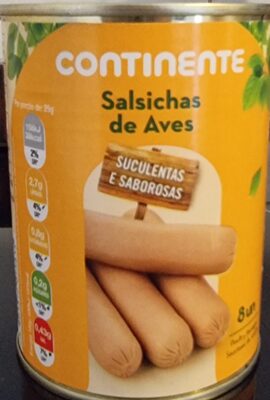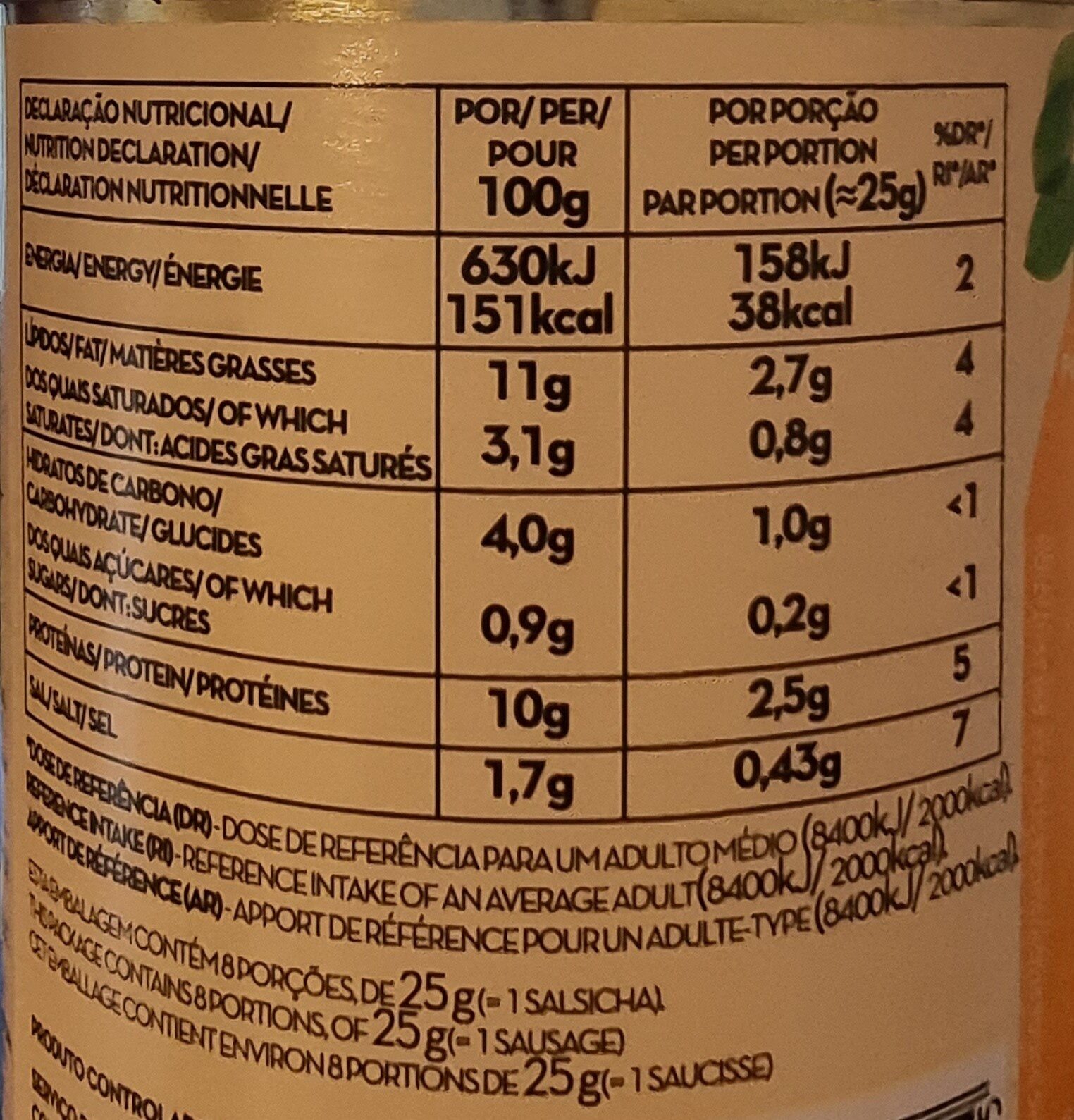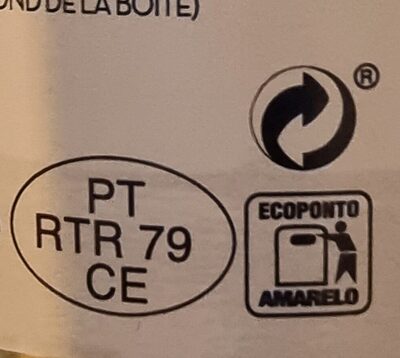Salsichas de Aves - Continente - 350 g (200 g)
This product page is not complete. You can help to complete it by editing it and adding more data from the photos we have, or by taking more photos using the app for Android or iPhone/iPad. Thank you!
×
Barcode: 5601312073635 (EAN / EAN-13)
Quantity: 350 g (200 g)
Packaging: Can
Brands: Continente
Categories: Meats and their products, Meats, Prepared meats, Sausages, pt:Salsichas de Frango e Peru
Labels, certifications, awards:
Green Dot, pt:Ecoponto-amarelo

Traceability code: PT RTR 79 CE
Stores: Continente
Countries where sold: Portugal
Matching with your preferences
Report a problem
Data sources
Product added on by inf
Last edit of product page on by october-food-facts.
Product page also edited by feat, marunsky, roboto-app.
If the data is incomplete or incorrect, you can complete or correct it by editing this page.













